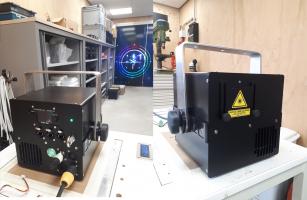1.2W each? That would need some serious cooling if you ask me. Hard to justify to a customer when selling a module.......
So we are back to combining 2 quads. If the p73 diodes are that great why don,t we see the bigger manufactures like Kvant and Artos using them? The p73,s are too much hassle to get a graphics quallity beam but they are fine for beamshows and that is pretty much it. You see that chinese companies that are in the low-end beamshow market use them but in the highend market the divergence has to be lower then 1mrd and that is very hard to get. But you get an A+ for effort from me because i haven,t seen anybody here that are doing so much testing as you have



 Reply With Quote
Reply With Quote
 If the p73 diodes are that great why don,t we see the bigger manufactures like Kvant and Artos using them? The p73,s are too much hassle to get a graphics quallity beam but they are fine for beamshows and that is pretty much it. You see that chinese companies that are in the low-end beamshow market use them but in the highend market the divergence has to be lower then 1mrd and that is very hard to get. But you get an A+ for effort from me because i haven,t seen anybody here that are doing so much testing as you have
If the p73 diodes are that great why don,t we see the bigger manufactures like Kvant and Artos using them? The p73,s are too much hassle to get a graphics quallity beam but they are fine for beamshows and that is pretty much it. You see that chinese companies that are in the low-end beamshow market use them but in the highend market the divergence has to be lower then 1mrd and that is very hard to get. But you get an A+ for effort from me because i haven,t seen anybody here that are doing so much testing as you have


